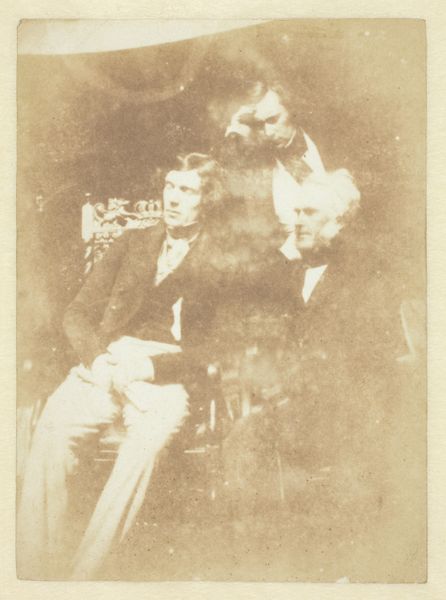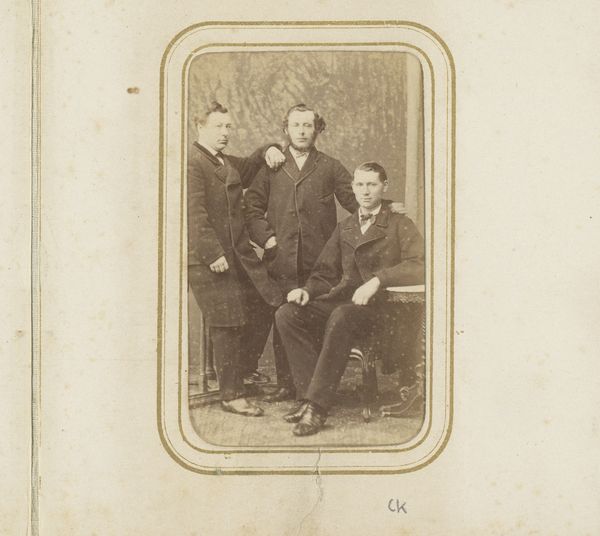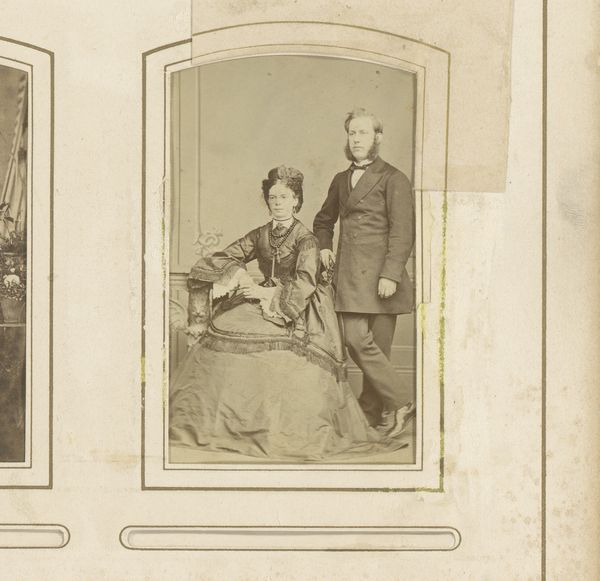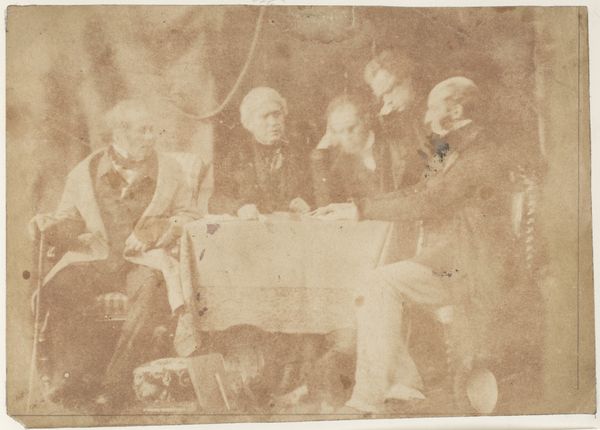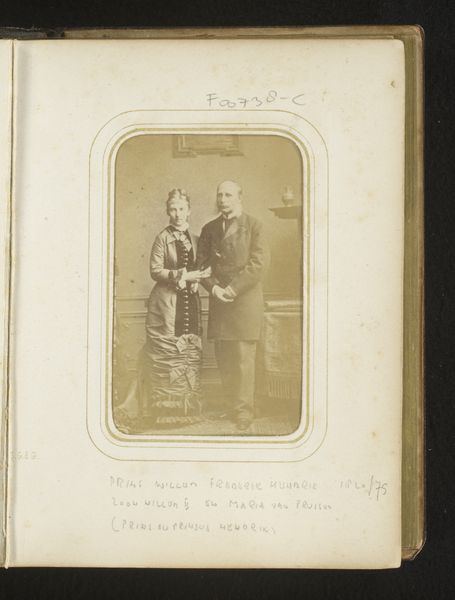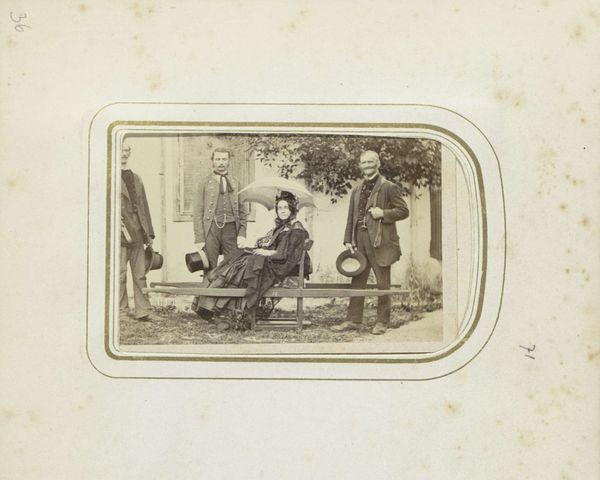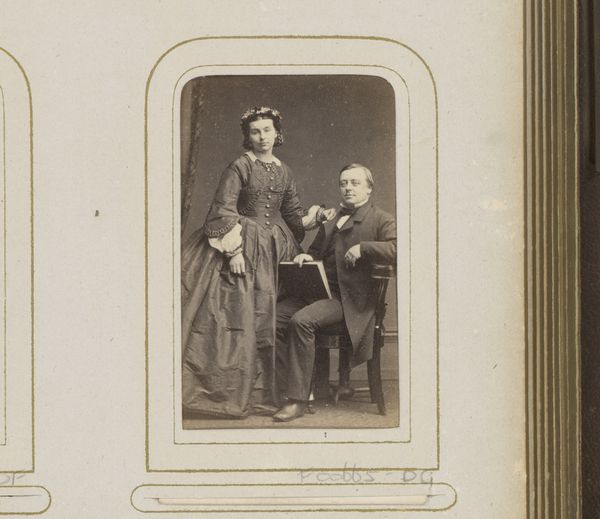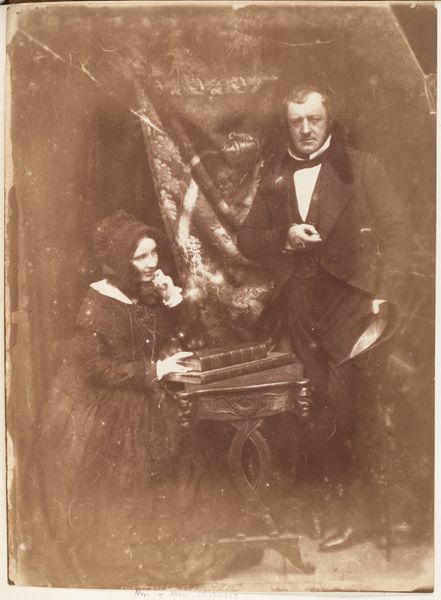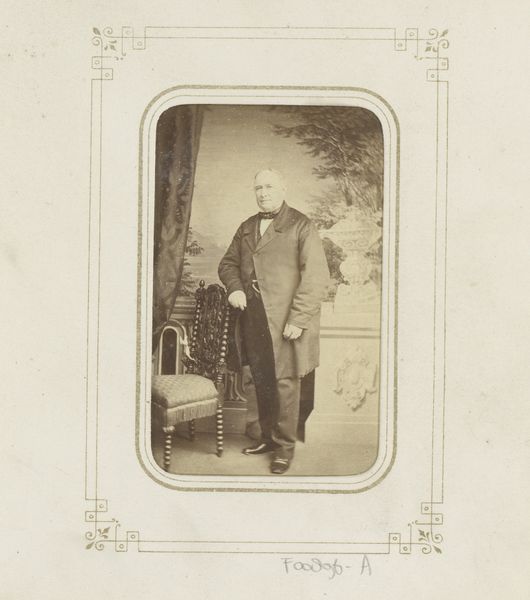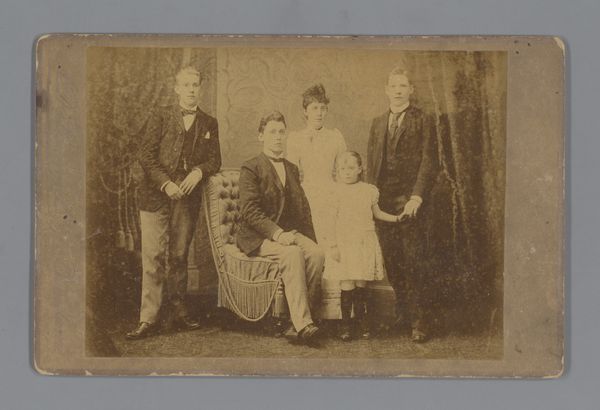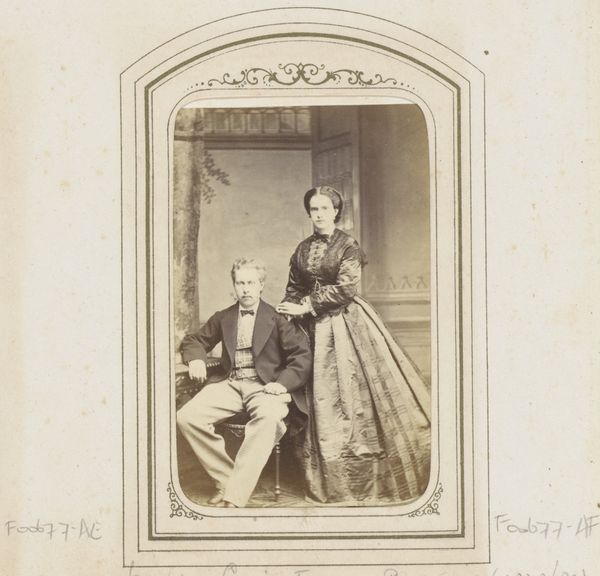
Ogilvie Fairly, Capt. Hamilton, and Gilmore 1843 - 1847
0:00
0:00
daguerreotype, photography
#
portrait
#
daguerreotype
#
photography
#
group-portraits
#
romanticism
Copyright: Public Domain
Editor: Here we have "Ogilvie Fairly, Capt. Hamilton, and Gilmore," a daguerreotype dating from 1843 to 1847, by Hill and Adamson. I am struck by the contrast between the almost casual poses and the formality suggested by their clothing. How do you interpret this photograph from a formalist point of view? Curator: The composition is certainly deliberate. Note the arrangement of the three figures; they create a triangular structure, with the seated figure grounding the image and the standing figures forming the upper angles. What does this signify to you? Editor: It brings balance, maybe even a sense of hierarchy? But I wonder about the hazy quality; the figures aren’t sharply defined. Curator: Precisely. The limited tonal range, that sepia tonality characteristic of early photography, actually softens the structure. This creates a gentle effect. See how the light falls across their faces and the subtle details in their attire—observe how light interacts with varied surfaces to define space and shape? Editor: The subdued tones do lend the image a sense of unity. It makes you look closer at the nuances. Curator: Yes, the restricted palette focuses our attention on the forms and their arrangement. We can look at photography and composition as being purely formal relationships of shapes, lines and tonal ranges. The medium's limitations ironically opened possibilities within. Notice how even with this early daguerreotype, there’s an articulation of the subject. How form overcomes circumstance, if you will. Editor: So, by focusing on the inherent formal qualities, we find layers of depth within what seemed like a straightforward portrait? Curator: Exactly. And through a careful evaluation of these qualities, we gain a deeper understanding of its artistic intention and impact. This is a powerful visual encoding. Editor: I never thought I could analyze photography this way! I will look at form with new eyes going forward!
Comments
No comments
Be the first to comment and join the conversation on the ultimate creative platform.
